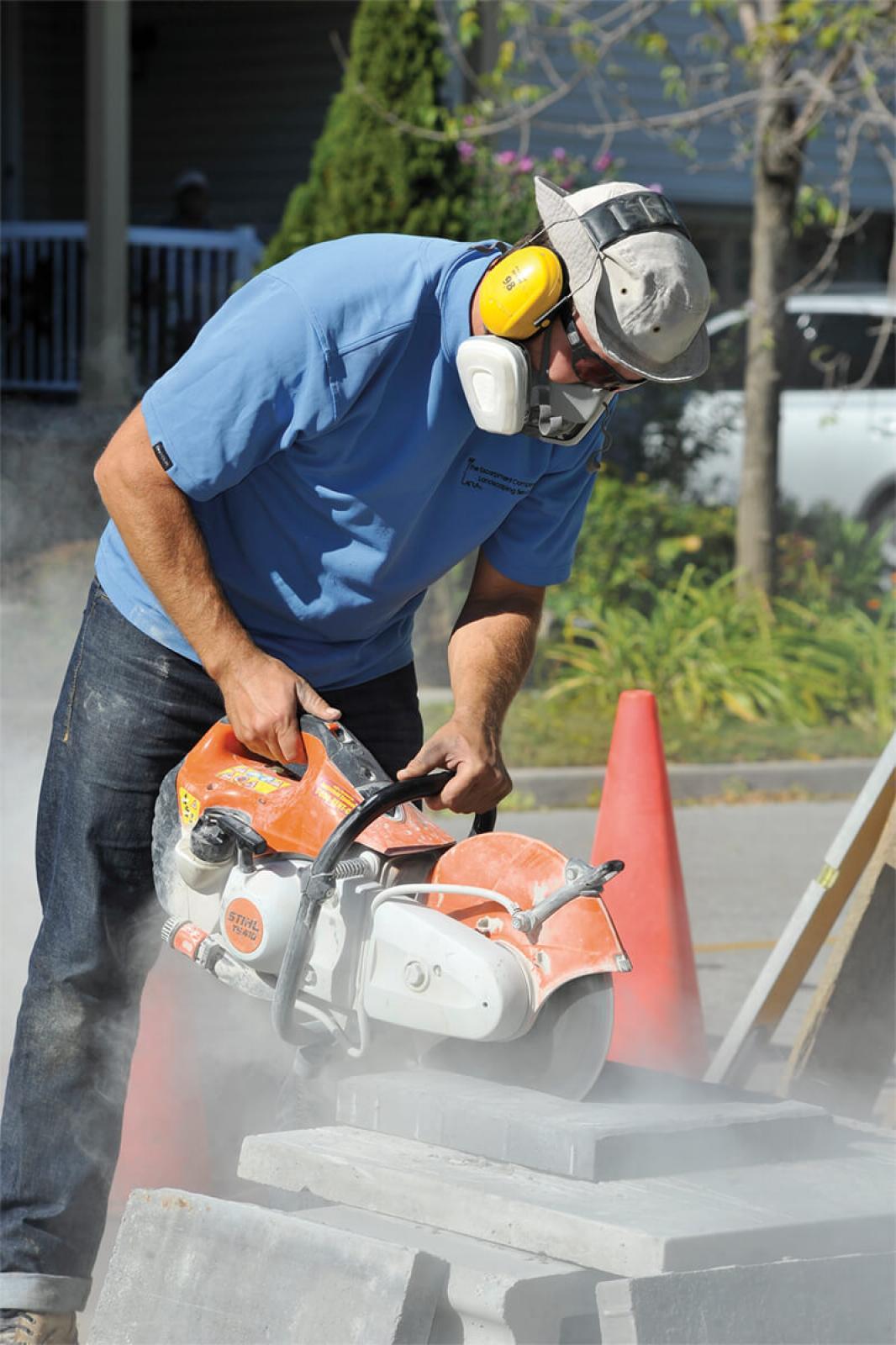September 2, 2019
Ministry blitz to focus on silica dust and diesel exhaust

Respiratory hazards are the focus of a health and safety blitz this fall.
Respiratory hazards
Between 2008 and 2017, long latency illnesses – illnesses in which there is a long delay between exposure to a disease-causing agent and the appearance of disease symptoms, accounted for the largest proportion of allowed WSIB benefit costs. Over two-thirds of allowed long latency illness claims over the past 10 years come from: lung cancer, pleural plaques, mesothelioma, asbestosis and chronic obstructive pulmonary disease, which are all associated with respiratory exposures.Cancer Care Ontario and the Occupational Cancer Research Centre estimate that exposure to asbestos, diesel engine exhaust, crystalline silica and welding fumes cause about 1,300 cancer cases a year in Ontario.
Gases, dusts, vapours, and fumes may be present at construction projects. They are referred to as ‘respiratory hazards’ when they can make a worker sick or die from being breathed in.
Examples of respiratory hazards include:
- Silica dust from cutting and breaking concrete, sandblasting or removing refractory ceramic fibers.
- Lead dust and fumes from grinding, welding, cutting or brazing surfaces coated with lead-based paint.
- Solvent vapours from adhesives, paints, strippers, cleaning solvents, and spray coatings.
- Carbon monoxide from operating gas-powered equipment in poorly ventilated work environments.
When workers cannot be adequately protected from these controls, employers must provide respiratory protective equipment suitable for the hazard to the workers and workers must use that equipment.
Inspectors will check that proper controls and work practices are in place, respirators are well maintained, workers have been trained on how to use the respirators properly, respirators are fitted to ensure an effective seal between the respirator and the worker’s face, worker exposure to airborne concentrations of hazardous biological or chemical agents listed in Ontario Regulation 833 are under the occupational exposure limits.
Musculoskeletal disorders
Musculoskeletal disorders (MSDs) are the top lost time injury at work reported to WSIB in Ontario. In 2017, MSDs represented about one-third of all accepted WSIB lost time claims.Inspectors will check that:
- Employers have provided training to workers on safe manual materials handling practices.
- Items are being manually handled in a safe manner.
- Items are being stored in a manner that does not endanger a worker when manually handling those items.
- Work areas and routes to and from work areas are kept free of obstructions so extra demands are not placed on workers when manually handling items.
- Handling items while the worker is on a ladder is being performed in a safe manner.
- Access to and egress from a work area is appropriate so that physical demands are not increased.
- Adequate housekeeping is taking place so that a worker can use assistive devices (for example, carts) and there are not increased demands when manually handling items.
Additional online resources
Resources available from the Ministry of Labour include an ergonomics in the workplace page that explains occupational health and safety laws related to ergonomics and includes resources and guidance on ways to address hazards from poor ergonomics. In addition, the MSD Prevention Guideline for Ontario includes fact sheets, step-by-step guidelines on organizing a workplace program to prevent MSDs, a risk assessment tool, quick summaries of basic MSD hazards and a large resource library.Read more about the health hazards of silica dust and what you can do to protect yourself in this feature article from the January 2019 issue of Landscape Trades:
READ MORE